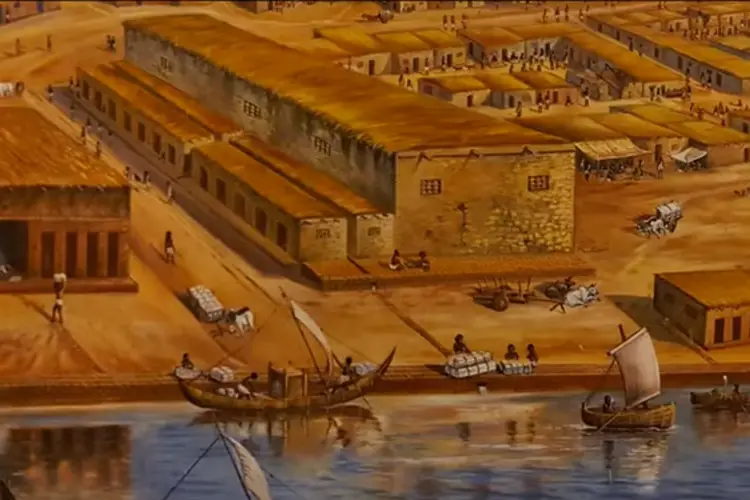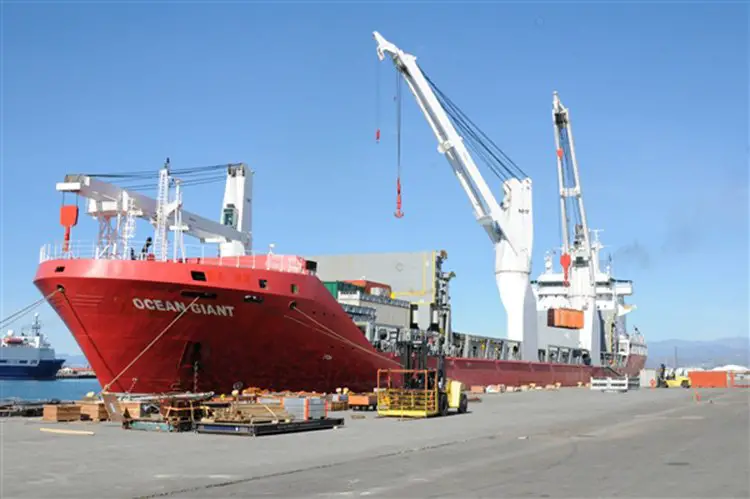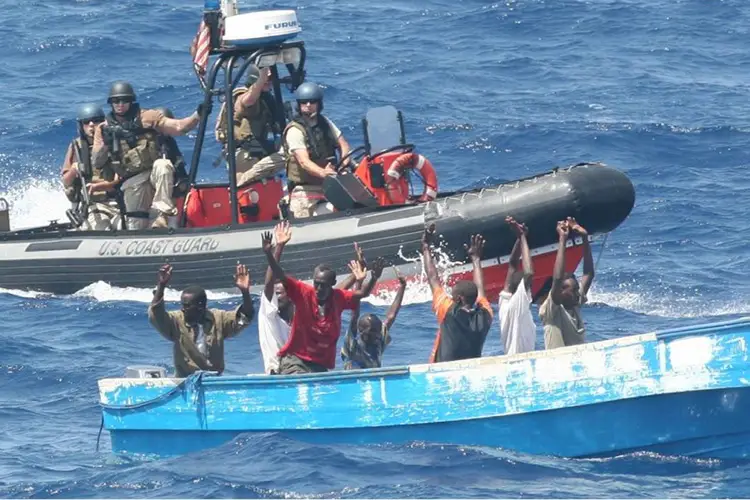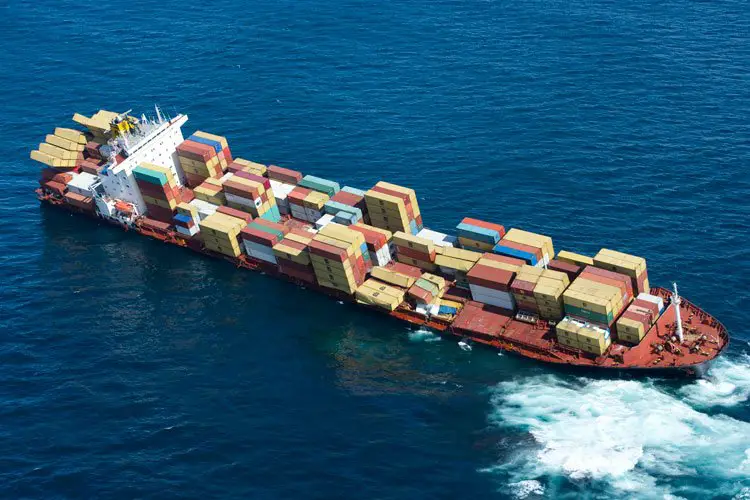Ancient Seaports of India

It may come as a surprise to many people that India has a rich history of shipbuilding and Indians were quite accomplished seafarers. This obviously means that India also had many seaports in the past.
Here is the list of ancient seaports of India. All of these ports were a hub of trade and commerce and in their time one of the busiest in the world.
Here is the list of ancient seaports of India
1) Lothal, Gujarat
Lothal is situated in the Bahl region of modern Gujarat and was one of the most prominent cities of the Indus Valley civilization. It is situated near the village of Saragwala in the Ahmedabad district of Gujarat. It was discovered in 1954 and is said to date back to 2400 BCE. Lothal’s dock is the oldest known dock not only in India but also in the world. The port connected the city to an ancient course of the Sabarmati river between Harappan cities in Sindh and the peninsula of Saurashtra at a time when the surrounding Kutch desert was a part of the Arabian Sea.
Modern oceanographers have been pleasantly surprised by the amount of knowledge that the Harappans possessed regarding tides. Their expertise in hydrography and maritime engineering is clearly evident in their constructions. They observed the tidal movements and their effect on brick-built structures as the wall is made of kiln-burnt-bricks.
The location chosen was also very strategic since the vessels would be able to use the highest tidal amplitude of the Gulf of Khambat for free movement through the flow tides in the river estuary.
The port facilitated the trade of gems, jewelry, spices, textiles, and mineral ores. Ships from West Asia, Africa came to these ports as suggested by historical documents.
2) Muziris Port, Kerala
This ancient rich, glamorous port city was one of the liveliest commercial areas in 3000 BC. Ships carrying spices, gems, silk, ivory, pottery, etc. frequented this place. The place is presently known as Kodungallur and is around an hour’s drive away from Kochi in central Kerala. The port connected the region with the Persians, the Phoenicians, the Assyrians, the Greeks, the Egyptians, and the Roman Empire. Over 30 countries contributed to the trade of this region. We find descriptions of Roman ships dropping anchor in this place in Sangam literature.
The Spice Route was a very valuable trade route, so much so that the Arabs kept it a secret till a Greek mariner Hippalus stumbled upon it initiating a major gold rush. However, this golden period saw a tragic demise as the Periyar river basic got devastated by tsunami waves. The grandeur of Muziris port got washed out of existence and all the cumulative attempts by historians and archaeologists to locate it have gone in vain.
Finally, in 2006-2007 the Kerela Council for Historical Research conducted a series of excavations in Pattanam in North Paravur. The conclusion of the extensive digging that was carried out was that the lost port of Muziris has been ‘found’. Chera coins, pottery, functional objects made of stones, copper, and iron have been found in this place. The artifacts point to the signs of inhabitation by the people of the iron age and the Romans.
3) Arikamedu Port
Arikamedu is situated in present-day Puducherry, a union territory of India. It was the only port via which the Tamilians traded with the Romans and the French. The port facilitated the trade of myriad items with a special focus on the export of textile, semiprecious gems, beads, glass, and shell bangles. One of the most imported items of trade was wine. Terra Sigillata (fine red Roman clay pots) was another popular imported item for the Tamilians.
Apart from these, East Asian glazed ceramics, Chinese Celadon pottery, Chola coins, etc. have been found in this region. Chinese artifacts belonging to the Song-Yuvan dynasty have also been discovered in this place.
For quite a long period this trading port seemed to have been forgotten. It was centuries later that the French East India Company reported having come across an ancient site in 1734. During the 1765 excavation, some brick structures were found. The first major work by ASI on this site was undertaken in 1945 by Sir Mortimer Wheeler who was the Director-General of ASI. Recently between 1989 and 1992 further excavations were carried out.
Also read: Top 10 Historical Ships
4) Baruch Port
A large and prosperous port by the name of Bharuch was founded around 2000 years ago in the same place as modern Gujarat. The port was also known as Barukaccha by the Greeks and as Barygaza by the Romans. It is staggering to realize how scarce the amount of data available on it. There is hardly any mention of this in historical documents. Only after the intervention of the Sakas during the last centuries did it flourish as an important point in the Indo-Roman trade network. Baruch ranks in one of the top export locations in terms of silk and spices that were well sought by the rich Roman citizens.
The Baruch port had trade with Ujjain and Mathura, of which the latter happens to have a primary stage in the control of the Ganges trade and that of the coastal areas of Sopara and Kaliyana. It also had connections to the trade centers of central Asia, leading to Bactria and slowly worked its chain up to the Roman Mediterranean, developing maritime links with Persia in the process.
One of the most important texts to mention the Baruch port is the previously mentioned Periplus of the Erythraean Sea. The author though the unknown is thought to be a Greek seafaring merchant who listed all the marts of the time. The items that the Roman merchants departed with include long pepper, ivory, cloth, indigo, onyx stones, etc.
5) Poompuhar Port
Poompuhar, also called Puhar is believed to be the Port town of the Chozha Empire. Currently, it is located in the Nagapattinam district of Tamil Nadu. In Silappadikaram, one of the five great Tamil epics, the author Ilango Adigal describes Poompuhar as a bustling port where horses, pepper, gems, gold, pearl, and wheat were traded in great quantities. Other literary works mentioning the Poompuhar port include other Tamil epics like Manimekhalai and Prakrit texts like Milindpanha, the Jataka Tales, Ptolemy’s Geographia, and the historic document Periplus of Erythrean Sea.
The last-mentioned work was composed during the 1st century CE and touches on the Chola kingdom, towns, ports, and trade centers. Ptolemy praises the ingenuity of the city planners. However, the mentions disappear all of a sudden and so does the city of Poompuhar.
The city’s remains were nowhere to be found leading to the doubt of the city’s existence. Excavations carried out in the region have indicated that a tsunami had wiped out the port.
The same thing had been mentioned in Siilappadikadam but obviously in a more cryptic or poetic way. The epic mentions it getting swallowed up by the sea’. A team of archaeologists found the remains of a wharf in the 1910s. Several other brick structures have been nearby subsequently confirming the existence of Poompuhar.
6) Calicut Port
One of the busiest ports in the extreme southern region of the continent is the Calicut port. It is located on the Arabian Sea and is also called Kozhikode. In around 1100 AD it flourished under the Chera regime becoming a chief trading port for spices like pepper, cloves, and cinnamon. Here textiles and spices were exported and imported Chinese ceramics and European pots.
In the year 1498, with the visit of Vasco da Gama, the port gained its relevance as one of the most important seaports of India. An extended trade relationship was established between the east and the west with this historic visit. However, it soon lost its importance under colonial rules. The only things that are left behind are the remains of a sea bridge, storage yards and goods handling cranes.
7) Tuticorin Port
Tuticorin (also known as Thoothukudi) port was established during the 6th century 550 Km southwest to today’s Chennai. It is one of the oldest seaports in India. The Pandyas, the Cholas, and several other dynasties have ruled this place and made it one of their prime seaports. Fishery and pearl were one of the most important items of trade in this port. The Periplus book has mentions of this port too.
Under the rule of the Dutch and the English, it gained more prominence. Under this regime, the port’s main export was palmyra fibers, senna leaves, salt, dry fish, etc. Cotton, pulses, grains, and coal were the main items that were imported. It still remains in the list of the top twelve most important ports in India.
8) Mormugao Port
Mormugao Port is a port situated in the state of Goa, on the western coast of India. Opened in 1885, it is one of the oldest seaports of India. It was collectively established by the British and Portuguese. It is operated by the Mormugao Port Trust and employs more than 2,600 people. It is the leading iron ore exporting port in the country. In fact, it accounts for about 32% or the total iron ore trade of India. This port increased the maritime trade in India greatly.
It was featured in the 1980 war film “The Sea Wolves”.
9) Chennai Port
Madras Port or Chennai Port is the third-largest container seaport in India. It was established in 1881 and it is the third oldest of the major seaports in India. However, trade in this region started way back in 1639. At the time, it was also an important military and administrative base. Some reports suggest that this has been used as a strategic location for business since the 1st century. The port employs more than 8,000 ports.
The port is mainly concerned with the import and export of automobiles, motorcycles and general material and cargo like iron ore coal, fertilizers, granite, petroleum products for industrial purposes and containers.
The trade-in of this port has grown rapidly since the year 2000.




![Straddle Carriers [ULTIMATE GUIDE] 5 Straddle Carriers [ULTIMATE GUIDE]](https://www.maritimemanual.com/wp-content/uploads/2021/07/straddle_carrier.jpg)


